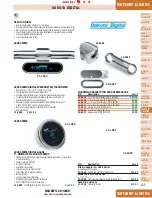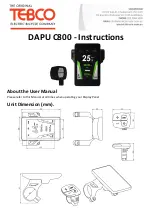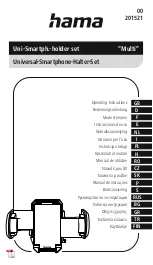
Condumax CLS15/16/21
Basic safety instructions
Hauser
5
2.4
Operational safety
1. Before commissioning the entire measuring point, verify that all connections are
correct. Ensure that electrical cables and hose connections are undamaged.
2. Do not operate damaged products, and safeguard them to ensure that they are not
operated inadvertently. Label the damaged product as defective.
3. If faults cannot be rectified:
Take the products out of operation and safeguard them to ensure that they are not
operated inadvertently.
2.5
Product safety
2.5.1
State of the art
The product is designed to meet state-of-the-art safety requirements, has been tested, and
left the factory in a condition in which it is safe to operate. The relevant regulations and
European standards have been observed.
2.5.2
Electrical equipment in hazardous areas
ATEX/NEPSI II 1G Ex ia IIC T3/T4/T6 Ga
• The sensors CLS15 / CLS16 / CLS21 have been developed and manufactured in compliance
with applicable European standards and guidelines and are suitable for use in hazardous
areas. The EC type examination certificate confirms compliance with the harmonized
European standards for using the sensors in hazardous areas. The corresponding EU
declaration of conformity is part of this document.
• The sensors may only be operated on suitable intrinsically safe circuits. Make sure that the
maximal permissible sensor input characteristic values, the maximum permissible
inductance L
i
and capacitance values C
i
in these circuits and the ambient temperature
ranges indicated are not exceeded.
• The electrical connection must be made according to the wiring diagram of the transmitter.
• Metallic process connection parts must be mounted at the mounting location
electrostatically conductive (< 1 MΩ).
• The CLS15-type sensors with non-metal process connections and the CLS21-type sensors
may only be employed for measurement in liquids with a minimum conductivity of
10 nS/cm.
• The CLS15-type sensors with non-metal process connections may not be operated under
process conditions in which electrostatic charging of the sensor, and particularly of the
electrically insulated outer electrode, is likely to occur.
• The maximum permissible cable length is limited by the maximum permissible
characteristic values of the transmitter: the total of the maximum permissible inductance L
i
and capacitance values C
i
for the sensor and measuring cable may not exceed the maximum
permissible inductance L
o
and capacitance values C
o
for the transmitter.
• When connected to the Mycom S CLM153 transmitter, the maximum permissible length of
measuring cables CYK71/CYK71-Ex or CPK9 is 16 m. When connected to the Liquiline M
CM42 transmitter, the maximum length is 50 m.
• Full compliance with regulations for electrical systems in hazardous areas (e.g. EN/IEC
60079-14) is mandatory when using the devices and sensors.






































